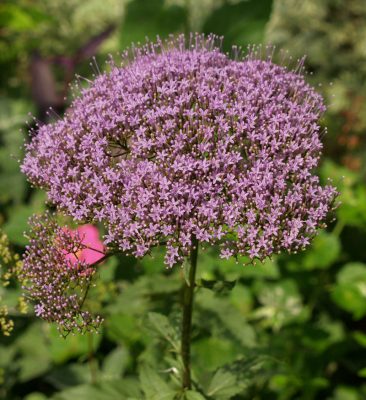Plants to Dry for Potpourri and Arrangements

by Trisha
With all plants, trim them from the stems, bundle with rubber bands, and hang out of direct sunlight to hold the color.
Trachelium, also known as the umbrella flower, puts up beautiful umbrella-shaped flowers on long stocks. It has a very long blooming period and comes in this beautiful purple.
Yarrow, comes in many colors along with the native white.
Nigella, common name: love in a mist or devil in a bush. It’s native to the Mediterranean, so it loves our temperatures and climate and soil conditions. In fact, it can be an aggressive re-seeder. It doesn’t really do well as a transplant so you won’t generally see it sold in nurseries as a plant, but the seeds are very easy to find. ‘;Mrs. Jekyll’ is a wonderful double blue, but there are pink and white varieties as well.
Nigella sativa is a variety we can use in cooking. The seeds are known as black cumin, and when dried, are often used on breads, curries and in Indian cooking. It is also used in many different folk remedies. Since it has a mild oniony flavor, you also hear it called black onion seed.
When you dry these flowers, the seeds can end up everywhere, so put them in a paper bag or use a tray underneath them. You can also take them off the stems and just dry the individual seedpods. I love to use those in potpourri and in flower crafts. They hold their color very, very well, and so are magnificent for drying.
Another great plant for drying is the cardoon, which looks a lot like artichoke, but you don’t eat its blooms. I like to dry them before the flowers open fully, because they hold together better and will last for years.
categories:
tags:
related:

 Trisha Shirey
Trisha Shirey